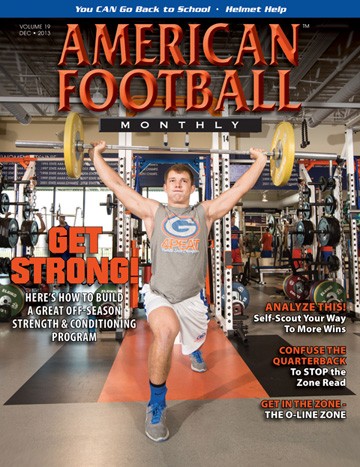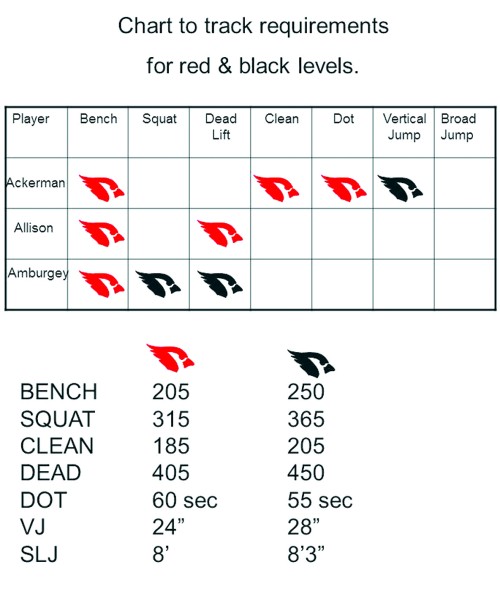Article CategoriesAFM Magazine
|
Managing Your Program: Giving Players a Focus for the Off-Seasonby: Keith GrabowskiOffensive Coordinator Baldwin-Wallace College © More from this issue For most programs, January is the start of the off-season.The gains made in the next six months are critical and must happen in order to have success in the fall. Keeping players focused and moving toward their goals and the team’s goals sometimes is a challenge when the season is so far off. Having a system to provide feedback and recognize the accomplishments of players as they develop themselves helps motivate and create excitement while working through the winter months. Following the 2008 season, I began my first off-season with a struggling program. We played a varsity schedule in 2008 with only two senior starters and two junior starters. We were basically a junior varsity team made up of freshmen and sophomores. While we were able to compete in every game, at some point our lack of size, speed, and strength caused us major problems. Coming in, I knew an off-season commitment was a challenge at this school. We had to completely change the culture and motivate our players to train to be athletes. We talked about some of the typical “clubs” that most programs use like the 250-pound bench club or the 1,000-pound club for a series of lifts. The first thing we realized was that both of those were a little too far out of reach for our athletes to accomplish in one off-season. We also realized that while developing strength would help us immensely, it probably would not be enough. We needed to develop the total athlete. To accomplish this, we set standards in four lifts, the bench, squat, clean, and dead lift. We also set standards in the dot drill to measure foot quickness, and the vertical jump and broad jump to measure power. We wanted to set a standard for the 40-yard dash, but we didn’t have any indoor space where we would be able to perform a 40-yard run. We set two levels, which if a majority of athletes reached just the basic level, we would be much better on the field. We designated the levels with our two colors, red and black. Red signified “varsity ready” and black signified “top athlete.” We set our goals at an attainable level with plans to increase the standards in the future as we began to develop more and more athletes in our program. Players were very motivated by seeing their row of the chart fill up with the red and black logos. We decided on an approach that would provide feedback every four weeks and we made a chart on which either a black or a red logo would be placed when the player reached that standard in an area being measured (See chart). Once a player reached all standards for a level, he would be awarded with a t-shirt, and when the season started he would receive a practice jersey designating the level he reached.
Our practice jerseys were white, and we said to our players that they would earn their colors in the off-season. They would receive a practice jersey that signified what they accomplished in preparation for the season. One of our biggest premises was that attendance would make a huge difference. If we could motivate our athletes to show up and work, then our program would take care of the rest. At the end of every four-week cycle, we recognized any standard reached as well as perfect attendance. It was no surprise that those who were being awarded for perfect attendance were the same players whose charts began to fill up with red and black logos. Our short awards and recognition session at the end of every four weeks was something our athletes looked forward to. We loved being able to recognize many athletes as we moved through the off-season months. The athletes loved seeing the progress they were making as the chart filled up with red and black logos. The program really helped attendance and our athletes were physically developing like we hoped they would. While I moved on to a position at the college level, one of my assistants used this program at his first coaching job. He took a school that won one or two games a season to a perfect 10-0 season and the school’s first playoff berth. He attributed much of their success to the work done in the off-season. |
|
| HOME |
MAGAZINE |
SUBSCRIBE | ONLINE COLUMNISTS | COACHING VIDEOS |
Copyright 2024, AmericanFootballMonthly.com
All Rights Reserved





